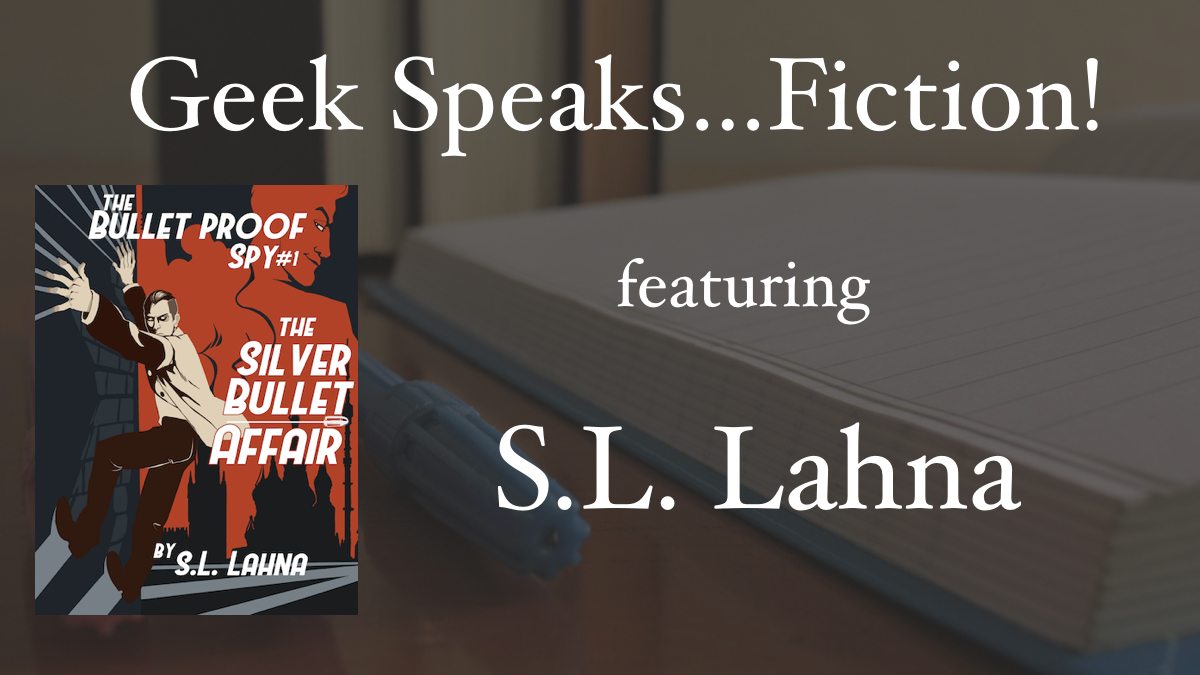As a child of the 90’s, Gargoyles was one of my husband’s favorite cartoons. When Ravensburger announced a Gargoyles based board game earlier this year, we knew it was something we were going to have to check out and Ravensburger was kind enough to send us our own copy to review.
What is Gargoyles: Awakening?
Gargoyles: Awakening is a cooperative board game based off of the 90’s cartoon Gargoyles from Disney. In the game you assume the role of one of the Manhattan Clan Gargoyles or Elisa and take on different scenarios that pit you against Demona and Xanatos. The game is designed for 2-5 Players Ages 10+ and takes about 45-60 minutes to play a full game. it has a MSRP of $29.99.
Gargoyles: Awakening Components
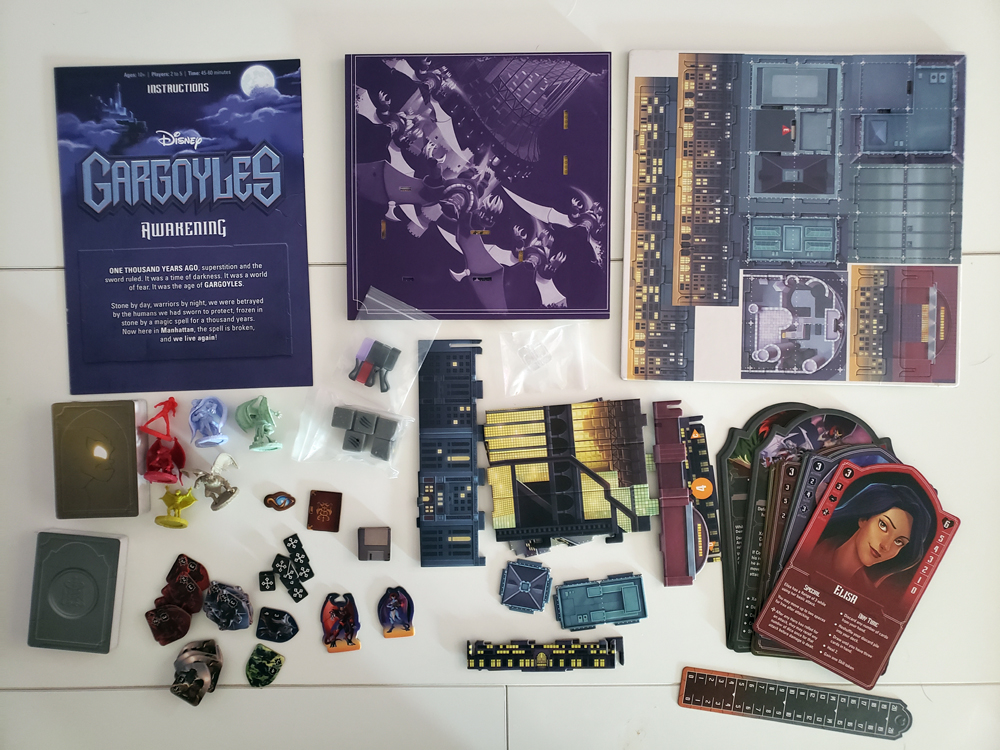
Gargoyles: Awakening contains the following:
- 1 Game Board
- 3 City Buildings
- 1 Eyrie Building
- 6 Hero Placards
- 6 Hero Figurines
- 18 Minion Tokens
- 10 Skill Tokens
- 3 Data Disc Tokens
- 1 Grimorum Arcanorum Token
- 1 Eye of Odin Token
- 5 Custom Dice
- 1 Villain Health Tracker
- 8 Health Tracker Clips
- 2 Villain Standees
- 40 Villain Cards
- 4 Episode Placards
- 1 Rules Booklet
Ravensburger always puts together quality games, and we have a growing collection of their products for a reason. One of the things I love about their tie-in games is that they are not just slapping a licensed skin on a familiar game and calling it a day. There is real effort to create games that feel like a tribute to the franchise they represent and include details that the fans are really going to appreciate. The Game Board and Buildings are a thick cardboard with art that comes straight from the beloved cartoon. The buildings fit together and have assigned areas on the board. This does take some time to put together, but the end result creates a more 3-D board that really feels like you are in Manhattan. The only drawback is the buildings do need to be disassembled to go back in the boy and that does make set-up take a little more time.

While not as thick as the Game Board or Buildings, the Placards and Villain Tracker are a thicker material and have small plastic Tracker Clips that help in keeping track to Health Points. Color coding and images of characters help differentiate which Placards are which and again, the artwork is straight from the series.
The Tokens are thick cardboard with nice art and again, color and image are used to help tell them all apart as well as the shapes for the more unique tokens.
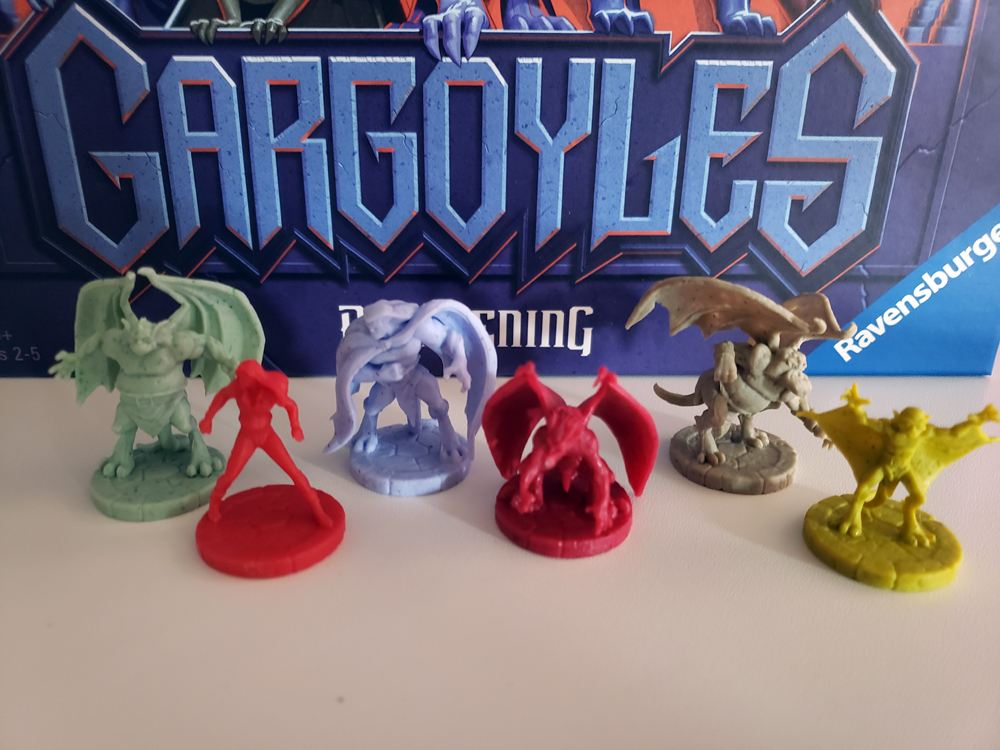
The Hero Figures are plastic figures that come in different colors that match the related Placards, but they are also each stylized after their respective characters. The Villain Standees are more cardboard based however. The relevant card decks are all color and logo organized so it’s easy to match the right decks to the right characters or the Villain Cards to the correct scenario. Those little details really made sorting stuff out easier.
The dice are custom to the game and the unique designs tie in very well with the overall theme.
Overall, it’s a well put together game with quality pieces.
How to Play Gargoyles: Awakening
Goal
The goal of Gargoyles: Awakening is to achieve the Win Scenario without triggering the Lose Scenario. The Game comes with several scenarios which are as following:
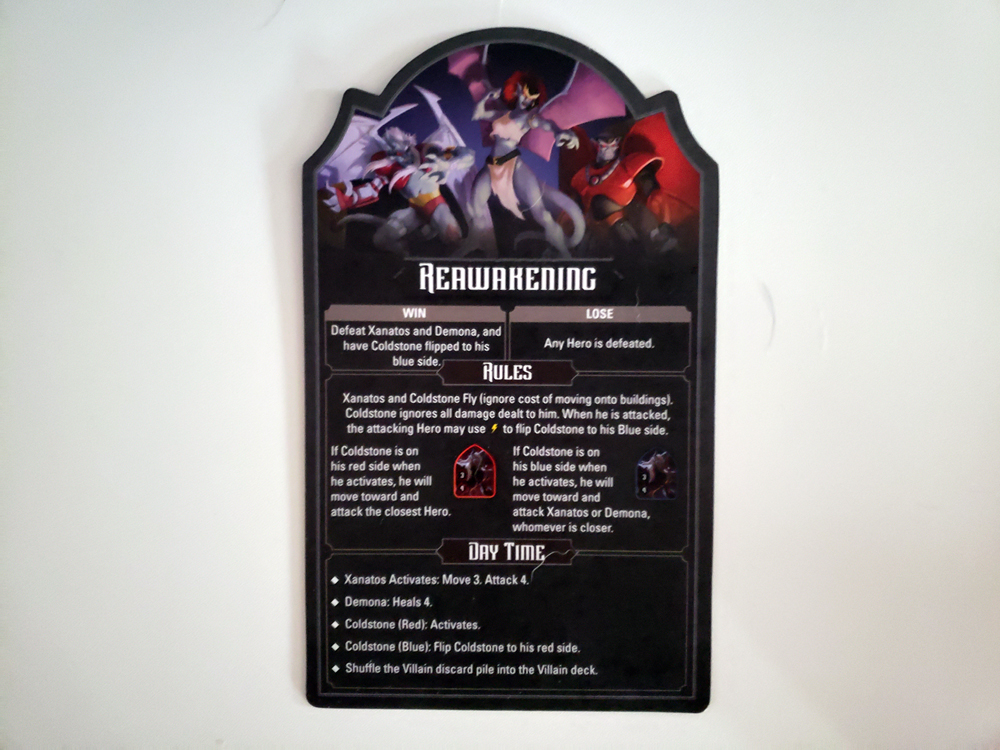
Reawakening
- Win: Defeat Xanatos and Demona, and have Coldstone flipped to his blue side.
- Lose: Any Hero is Defeated.
Information Warfare:
- Win: All three Data Disks are at the Clock Tower.
- Lose: Any Hero is defeated or all three Data Disks are at the Eyrie Building.
Temptation and Magic:
- Win: Defeat Demona.
- Lose: Any Hero is Defeated.
Battle with the Steel Clan
- Win: Defeat Xanatos.
- Lose: Any Hero is defeated or Xanatos and 1 Steel Clan, or 2 Steel Clan are on the Clock Tower.
Setup

Other than the time it takes to set up the buildings, it does not take too much time to set up a game. Each game will have some setup variations based on the Win/Lose scenario presented, which will be noted on the relevant Episode Placard. To set a game up, do the following:
- Unfold the Game Board.
- Assemble the City Buildings and place on matching space on the Game Board. There are further diagrams in the Instruction Booklet to help with this.
- Select an Episode Placard. This Placard will tell you which components you need, tell you where to place pieces in the city, and will note Win/Lose conditions and any specific rules.
- Shuffle Villain Cards that match the Episode and place them in a Villain Deck beside the Game Board.
- Place the Episode Placard next to the Game Board so the special rules are available to check throughout the game.
- Place the Villain Health Tracker next to the Episode Placard and set the Villain Health to the values indicated by the Episode Placard.
- Each Player selects a Hero Placard and sets the Tracing Clip on the Highest health value for that character.
- Each Player takes the matching Hero Cards and Hero Figurine for their Hero Placard. The Hero Figurines are placed on the Police Clock Tower in separate spaces.
- Each player shuffles their Hero Cards and placed them face down in front of them before drawing three Cards.
- Whoever watched the cartoon most recently goes first.
Again, other than assembling buildings, most of this process goes fairly quickly and variations for each scenario are not ridiculously complicated. My ten-year-old probably could set up a game without help, but younger or more impatient kids are probably at higher risk of jamming building pieces together until they are damaged, so do take note of that if some of your household’s gamers are younger. The diagram in the booklet is really helpful and did help me get things set out pretty smoothly.
Gameplay
Once the game gets going, it’s pretty quick to catch onto as each Player Turn has 3 Phases: Hero, Villain/Daylight, and Refresh. When I’m playing games with the kids I really appreciate games designed where each turn has a pattern but it’s the choices in that turn that are where the Player Strategy comes from. These are the Phases in more detail and in the order they occur:
Hero Phase:
First, a Player can take as many actions as indicated on the Hero Placard in the upper left corner. These points can be used for Movement, Attack or playing a Hero Card that requires Action Points.
- Move: A hero can use 1 Action Point to move as many spaces as indicated on their Hero Placard. Gargoyle Heroes have the option to use Glide to move extra spaces if they are starting from a building. Moving up a Building uses two Action Points no matter how high they are moving. You may move through occupied spaces but may not end on an occupied space.
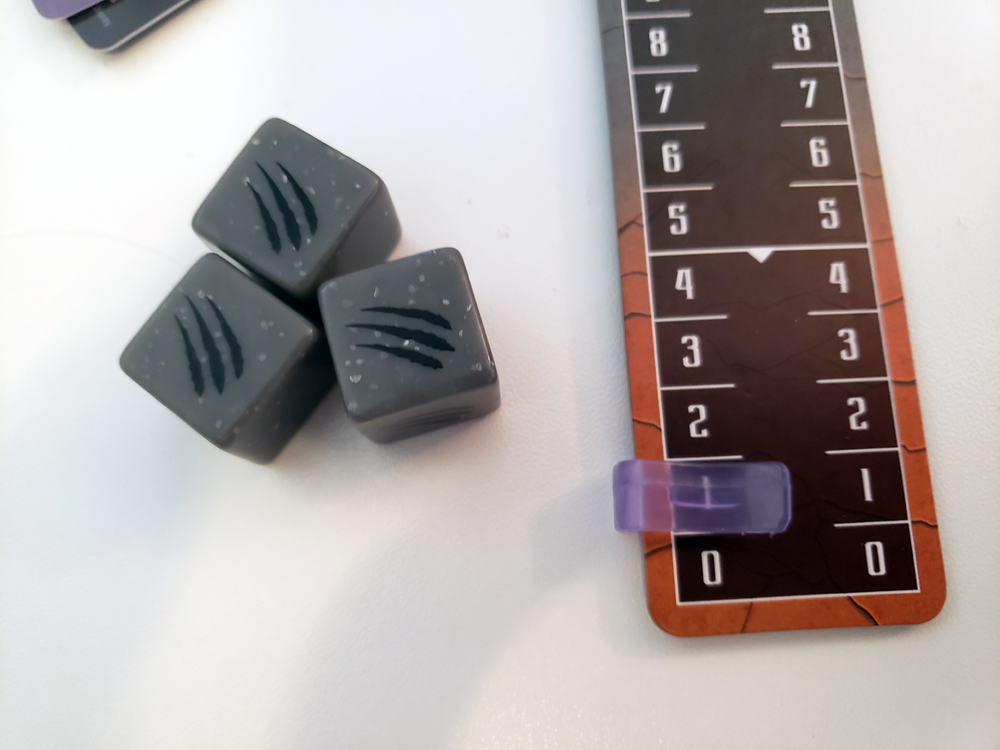
This Attack is more than strong enough to wipe of a Villain’s remaining Health. Photo by Elizabeth MacAndrew. - Attack: All attacks have Strength and Range. Strength is how many Dice you roll, Range is how far away your target may be. Roll your attack, a Blank Symbol means nothing happens, each Claw Mark Symbol is 1 Damage, each Lightning Bolt allows a Special Ability to be activated. Anytime a Hero or Villain reaches 0 Health, they are considered defeated. Daytime and other Effects can allow healing. If a minion is Stunned, rotate their token 90 degrees. On their next chance to Activate them, rotate them back instead of letting them Activate.

Elisa’s Player uses two Action Points to use a Hero Card. Photo by Elizabeth MacAndrew. - Hero Cards: Hero Cards that are not Reactions have an Action Point Cost. Follow the directions on the Card, then discard it face up in your Discard Pile. If the card performs other special effects these take place after other parts of the Card have been resolved.
- Items: Items can occupy the same spot as a Hero. A Hero can spend 1 Action Point to interact with an Item in the same space they are in or a space adjacent to them. If they take Damage from an attack, they drop the Item they are holding.
Players may also do the following:
- Skill Tokens: Each Hero has a Skill that requires Skill Tokens to use. These may be used during ANY Player’s Hero Phrase.
- Reaction Cards: Cost no Action Points and can be played when a Hero Attacks, when you are Attacked, or when another Player’s Hero is Attacked.
Villain/Daytime Phase
Each Player will carry out turns for the Villains too. Check the Nighttime Tracker on the board. If four Villain Card with Crescent Moons are present, Daytime goes into effect. If not, continue with the Villain Phase instead.

- Villain Phase: If Daytime is not Activated, a Villain Card is drawn. Villain Cards with moons go to the Nighttime Track when done, otherwise they go to the Villain Card Discard Pile. Cards may require Villains or Minions to Activate. Minions use the Movement and Attack Values of their Tokens. Villains use the values on the Villain Card drawn.
- Move: Villains Move according to the Episode Placard and will take the shortest path possible. If they come within a space of a Hero they will stop and not proceed forward even if they have additional movement. If a Villain cannot be placed in a specific location because it is occupied, place them as close as possible to that location.
- Attack: Villains Attack just like Heroes and using the same rules. If no Heroes are in Attack Range, Attacking is skipped.
- Special Text: Resolve any Special Text as indicated.
- Items: Same rules as with Heroes.
- Placing Tokens: Defeated Minions are discarded to the Minion Token Pile. New Minions are drawn from this pile.

- Daytime Phase: When it is Daytime, follow the directions on the on the Episode Placard. Make sure all the Villain Cards from the Nighttime Tracker and Villain Cards in the Discard Pile and reshuffled into the Villain Deck. Each Player starting with the current Player carries out the instructions on their Hero Placard for Day Time.
Refresh Phase:
If the current Player has less than three Hero Cards, they draw until they have three and play moves to the next Player.
Game End

The game ends when the conditions for Win or Lose based on the Episode have been triggered. As this is a cooperative game, Players either succeed or fail together.
Why You Should Play Gargoyles: Awakening
Overall, the game is quality made, well thought out, and well put together. Anyone who loved the show as a kid is going to get a hard dose of nostalgia. However the game is accessible enough for those not familiar with the series. Playing the game may have just convinced my kids to go watch the series with my husband on Disney+ however. The cooperative nature of this game makes it super accessible for families and even though the recommended age is 10+, we had no issues with our 7-year-old playing since he’s fully capable of reading the card and nothing has to be kept secret. Since strategy can be discussed amongst players, he’s not at any specific disadvantage.
Setup isn’t too complicated once the buildings are constructed, but know if your kids are the type to jam those pieces together too hard or not. Otherwise, it’s pretty easy to get going, especially once Heroes are selected. The Instruction Booklet is a particularly useful tool for all of this.
As I noted before, gameplay is streamlined into a few phases of actions and once you get the first turn played, catching on is really easy. Given how successful our 7-year-old was at Attacking Villains, I’d say we got the actual gameplay sorted right out. It is especially the kind of game where if you have a new player go last, they should be comfortable taking their turn after seeing how it works. The cooperative play made the strategizing and teamwork a lot of fun. Our kids are at two different gameplay levels, so games everyone can play together like this are especially nice. Given how stuck at home almost everyone still is, games that don’t trigger insane competitiveness tend to keep gameplay fun for all.
The price zone for the game is great, especially given that it comes with numerous scenarios and appeals to a wide age range. At $29.99 I feel like it’s reasonable to gift to that grown-up 90’s kid who absolutely loved the show. For parents trying to bring in a new generation of fans, this might be just the trick and you can absolutely make an afternoon out of the game and watching the show. You can get your own copy at Target either in-store or online.


